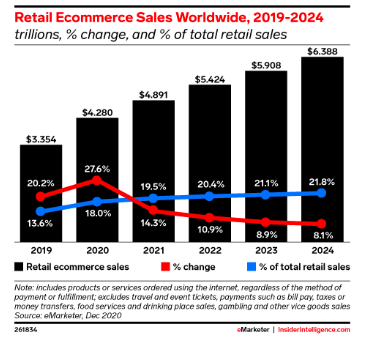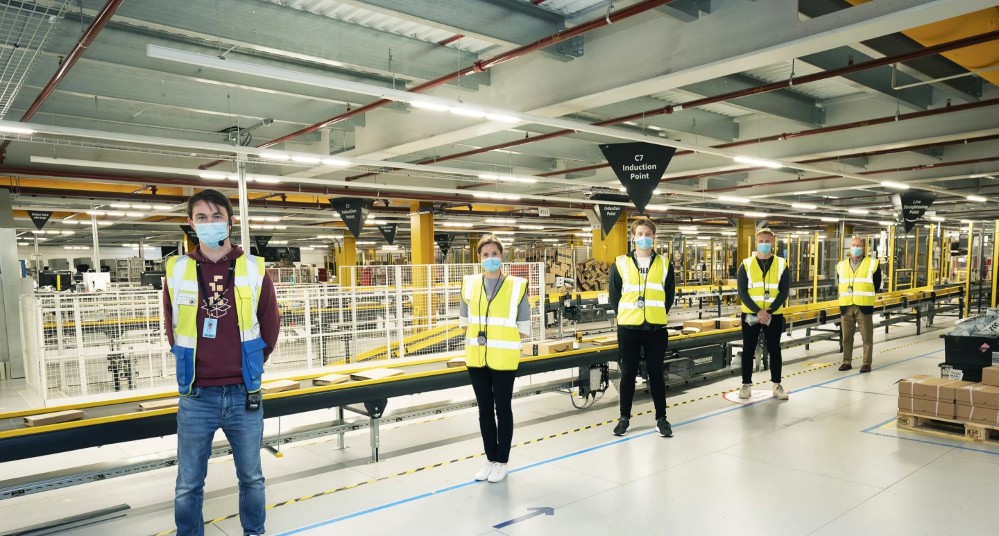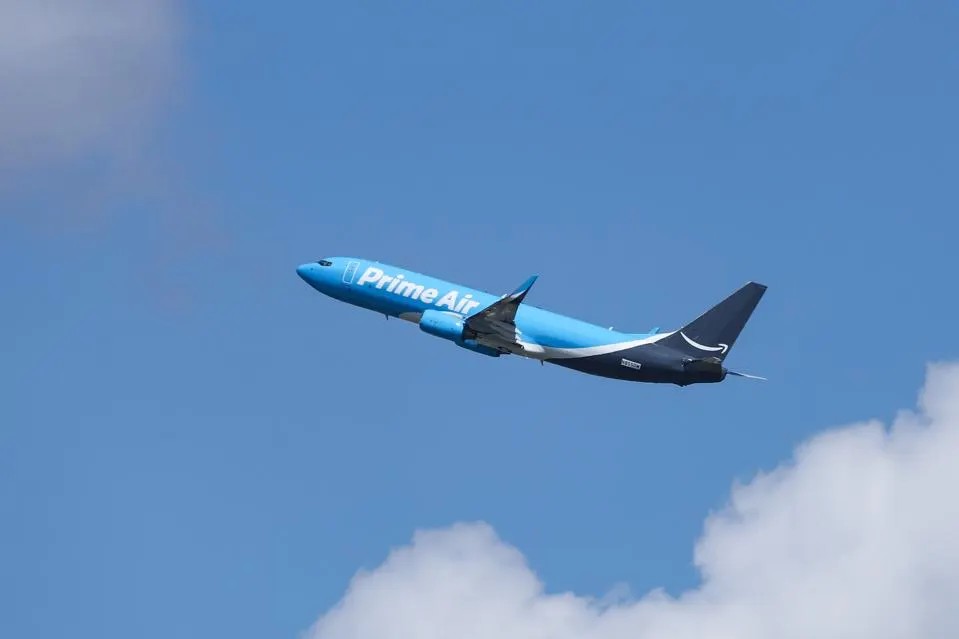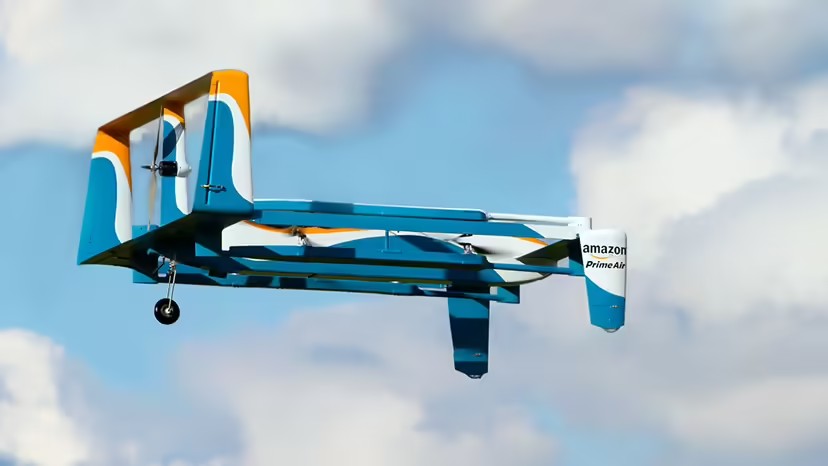TikTok, the popular video app, has set its sights on the booming online shopping industry. With an increasing number of viewers inquiring about the products showcased by creators, TikTok’s parent company, ByteDance, aims to capitalize on this interest.
However, while TikTok’s foray into e-commerce poses a challenge to the leading US online retailer, Amazon, it faces obstacles that Amazon has already solved handedly, particularly in the realm of logistics.
TikTok’s Ambitious Move
According to Insider Intelligence, global retail e-commerce surpassed $5 trillion in 2021 more than double the figure from five years prior. Predictions indicate that the market will exceed $8 trillion by 2026.
Recognizing the potential, TikTok intends to claim a larger share of this growing market, diversifying its revenue beyond digital advertising, which experienced a slowdown last year. In addition to TikTok Shop, which enables brands to sell directly on the platform, TikTok has now begun selling products directly as well.
Retail E-commerce Sales Worldwide 2019 – 2026

The authenticity of social shopping presents a unique advantage for TikTok. Observing a favorite creator using a product is often more compelling than traditional digital advertisements.
This highlights the shortcomings of Amazon, where functionality often overshadows entertainment. In response, Amazon launched its own TikTok-style feed, albeit with lackluster results, featuring videos showcasing available products.
While TikTok aims to offer a more enjoyable shopping experience, it faces challenges that Amazon has already overcome. One such challenge is the need to convince retailer partners that political threats to ban or limit the app are not imminent.
Moreover, TikTok lags behind Amazon in terms of logistics investment, which plays a crucial role in the e-commerce industry.
Amazon’s Logistics Supremacy
Amazon’s logistics network is renowned for its efficiency, enabling the company to deliver packages swiftly to customers. According to Supply Chain Today, the company operates a vast network of fulfillment centers strategically located near major transportation hubs, minimizing shipping times.
Furthermore, Amazon employs various transportation modes, including air, ground, and sea, to optimize delivery. By integrating technology into its logistics network, Amazon has streamlined operations with advanced software systems for routing, scheduling, and automation.
The company has also forged partnerships and agreements with carriers and other companies, such as airlines and delivery networks, to enhance delivery times.
To meet the demand for faster delivery, Amazon has continuously invested in expanding its logistics capacity. During the pandemic, the company doubled its capacity, and between 2019 and 2021, its annual capital expenditure quadrupled. In 2021 alone, Amazon spent approximately $33 billion on fulfillment centers and transport.

Amazon’s dominance in the American retail sector can be attributed to its fulfillment center model. By centralizing its supply chain and swiftly responding to market demands. Amazon has been able to provide fast and reliable delivery to its customers.
The company’s vast network of fulfillment centers allows for efficient storage, processing, and shipping of products.
Additionally, Amazon boasts some of the largest warehouses globally, a fleet of planes, and ongoing investments in driverless vehicles.
In contrast, TikTok’s logistics infrastructure significantly lags behind Amazon’s. TikTok’s partnerships with logistics companies cannot rival the capabilities of Amazon’s extensive network. Consequently, convincing retailers to trust TikTok’s logistics capabilities poses a significant challenge for the video app.
The rapid growth of e-commerce has led consumers to expect faster delivery times. A recent study revealed that 60 percent of global consumers anticipate two-day, next-day, or even same-day delivery. This expectation has been shaped by the efficiency demonstrated by major online retailers like Amazon.

To achieve rapid delivery, online retailers employ various strategies. Tinglong Dai, an expert in operations management, explains that businesses seek to strike a balance between responsiveness, cost, and quality. This involves using advanced demand forecasting techniques to predict customer preferences and maintain adequate inventory levels.
E-commerce warehouses also utilize accurate inventory information, position products strategically based on demand, and employ techniques like cross-docking to streamline operations.
In addition to its extensive logistics infrastructure, Amazon has also invested heavily in advanced technologies to optimize its operations.
This includes the use of robotics and automation in its warehouses to improve efficiency and reduce processing times. By utilizing algorithms and data analytics, Amazon can predict demand patterns, optimize inventory management, and streamline the fulfillment process.
Another crucial aspect of Amazon’s logistics success is its transportation network. The company operates its fleet of delivery vehicles, including vans and trucks, to ensure timely deliveries. Additionally, Amazon has established partnerships with major shipping carriers and even explored innovative delivery methods such as drone delivery.

Furthermore, Amazon’s Prime membership program has been instrumental in enhancing customer loyalty and driving massive revenue. Prime members enjoy benefits such as free and fast shipping, which further reinforces Amazon’s commitment to efficient logistics and customer satisfaction.
Challenges Ahead: TikTok’s Uphill Battle to Replicate Amazon’s Logistics Prowess
While TikTok may have a large user base and significant influence, it will face an uphill battle in replicating Amazon’s logistics prowess. Building and maintaining a robust logistics infrastructure requires substantial investments, partnerships, and expertise.
TikTok will need to establish a reliable network of fulfillment centers, optimize inventory management, and secure efficient transportation options to compete with Amazon’s logistics capabilities.
Moreover, TikTok will need to earn the trust of retailers and customers in its ability to provide timely and reliable deliveries.
This may involve building strategic partnerships with established logistics providers or investing heavily in its own logistics infrastructure. Overcoming these challenges and establishing a strong logistics foundation will be crucial for TikTok’s success in the e-commerce industry.
Related Articles
- Customer Retention Takes Center Stage for Marketers in 2023
- China Smartphone Shipments Skyrocket 22.6% in May Following Slump
- US Ad Spend Finally Rebounds: May Was First Positive Growth Month in 11 Months
What's the Best Crypto to Buy Now?
- B2C Listed the Top Rated Cryptocurrencies for 2023
- Get Early Access to Presales & Private Sales
- KYC Verified & Audited, Public Teams
- Most Voted for Tokens on CoinSniper
- Upcoming Listings on Exchanges, NFT Drops
